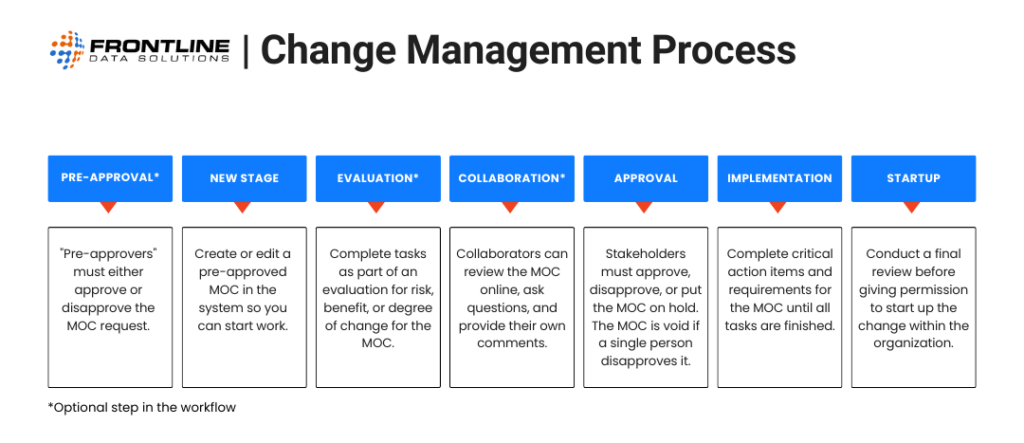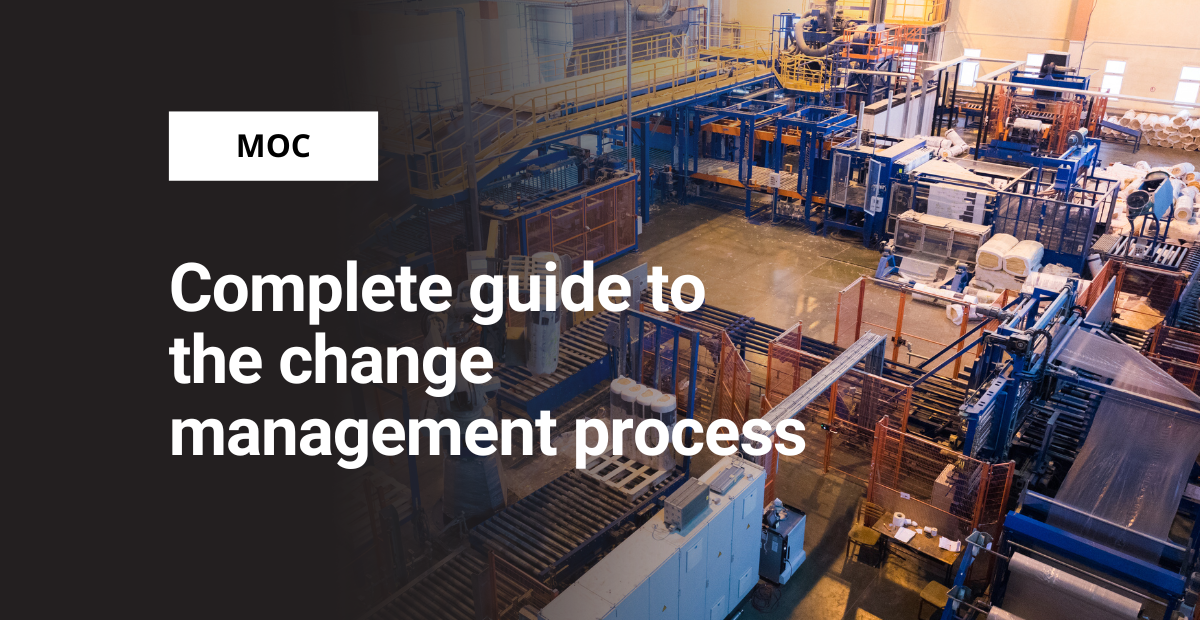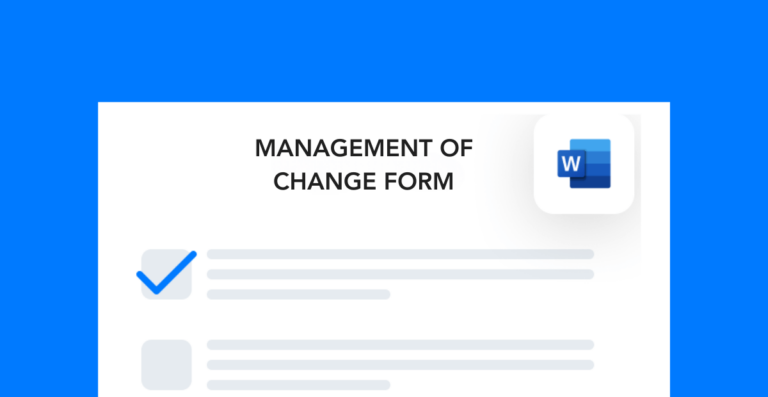Implementing the change management process can transform your company’s performance in all areas. From health and safety to quality control, the benefits of this process are nearly endless.
Change management definition and uses
Change management is a process for carefully planning and executing modifications to the existing systems within an organization. The purpose of this process is to ensure that changes interfere as little as possible with your company’s overall performance.
You can use this process for changes to:
- Personnel (organizational structure/staffing)
- Critical process equipment
- New technology or tools
- Processes (production, quality assurance, IT, customer service, etc.)
- Regulatory compliance
- Products and/or services
- Company policies (performance reviews, HR investigations, etc.)
You can use the change management process for any modifications that may have a big effect on your company. In other words, use it any place where having a standardized approach might reduce errors or downstream issues.
Benefits of a standard approach
Standardizing your process for implementing changes is critical because it:
- Decreases your company’s risk exposure.
- Ensures consistency across departments and locations.
- Reduces health and safety risks for high stakes processes and equipment.
- Helps your team avoid major oversights.
- Eliminates errors in the implementation of new systems, products, etc.
- Lowers the chances of making a compliance oversight.
- Allows you to better coordinate large projects with many stakeholders.
While standardization should help eliminate many of the headaches that come with implementation of new changes, it only works if your team follows the steps in the process.
Steps in the change management process
There are many different ways you can set up your change management process. At minimum, it should include the following four steps:
- Request: Submit a request for a new change.
- Approval: Review the request to either approve or disapprove the request.
- Implementation: Complete all tasks needed to get the change ready to roll out.
- Startup: Introduce the change throughout the organization.
As you can see, the process relies on several checks and balances. The point of this is to ensure sufficient oversight and consideration before making a large change.
That way, you reduce the risk of implementing a change prematurely or incorrectly. Plus, the approval step may help you identify additional opportunities to make the change even better.
I’d like to propose a couple of optional steps (in addition to the ones listed above). They are:
- Evaluation: Evaluate the risk, benefits, and degree of change for the change request.
- Collaboration: Have team members review the plan and provide feedback.
These are extra ways to find and fix problems with your implementation plan before the startup phase.
Once you know the workflow you want your team to follow, you need to make a plan for implementing a change management process throughout your company.
How to implement the process
Maybe you’ve had a catastrophic incident as a result of improper change management. Or maybe your team is simply overwhelmed and needs a standardized way to track ongoing projects.
Regardless of why you’ve become interested in change management, implementing this process is often difficult. That’s why it’s so important to have a plan before you start. Here are some factors that may affect your plan:
- Number of locations where you want to roll out the change management process
- Budget for tools like change management software or consultants
- Timeline for how long you want the implementation to take
- Size of the team you’ll have to oversee the implementation
I’d start by determining these factors. For example, once you determine the number of sites to cover, you can figure out how many people to recruit for the implementation team.
Once you know your budget, you can explore third-party solutions like management of change software. And after you figure out your timeline, you can start to schedule milestones or checkpoints.
If you’re starting completely from scratch with no change management process, you should nail down the workflow before you do anything else. Get as much input as you can from different stakeholders on whether the workflow is realistic and manageable.
Sometimes, already having a process in place can be more difficult than starting from scratch. That’s because you have to break your team’s existing habits to begin a new approach.
If that’s the case, communication is key. I’d prepare a document with answers to all the questions your team might have about the process changes. Here are some examples:
- How does the new process differ from how we currently manage changes?
- What adjustments will we have to make in order to comply with the new process?
- Who handles change requests?
- How do we submit new change requests?
- If we disagree with a proposed change, where do we escalate our concerns?
Remember, making unilateral changes without consulting your workers is always a recipe for disaster. The easiest way to achieve success is to address concerns before you start the change management process implementation.
Using change management software from Frontline Data Solutions
Most large organizations turn to management of change software to handle the process implementation. That’s because it provides a structured system for workers to follow.
With a software tool, you give your team control over the details of change management, but you eliminate variation in the process. Built in workflows mean your team can’t deviate from the process, which is exactly what you want if you’re handling complex organizational changes.
In the Frontline MOC system, users follow the same workflow every time:

When you adopt a tool like this, the hardest part is going through the implementation process to get your company’s information set up in the system. This process includes:
- Setting up your workers as users within the system
- Importing information like company locations (divisions)
- Uploading or creating forms that you want your team to use for certain steps
- Training your workers how to use the software
Since the Frontline out of the box system has everything you need to start tracking changes, the implementation process can be either slow or fast. It all depends on how soon you want to roll out the change management process at your site(s).
If you’re looking for a long-term change management solution, book a demo with our team to see exactly how the software will help you stay on top of new changes.





